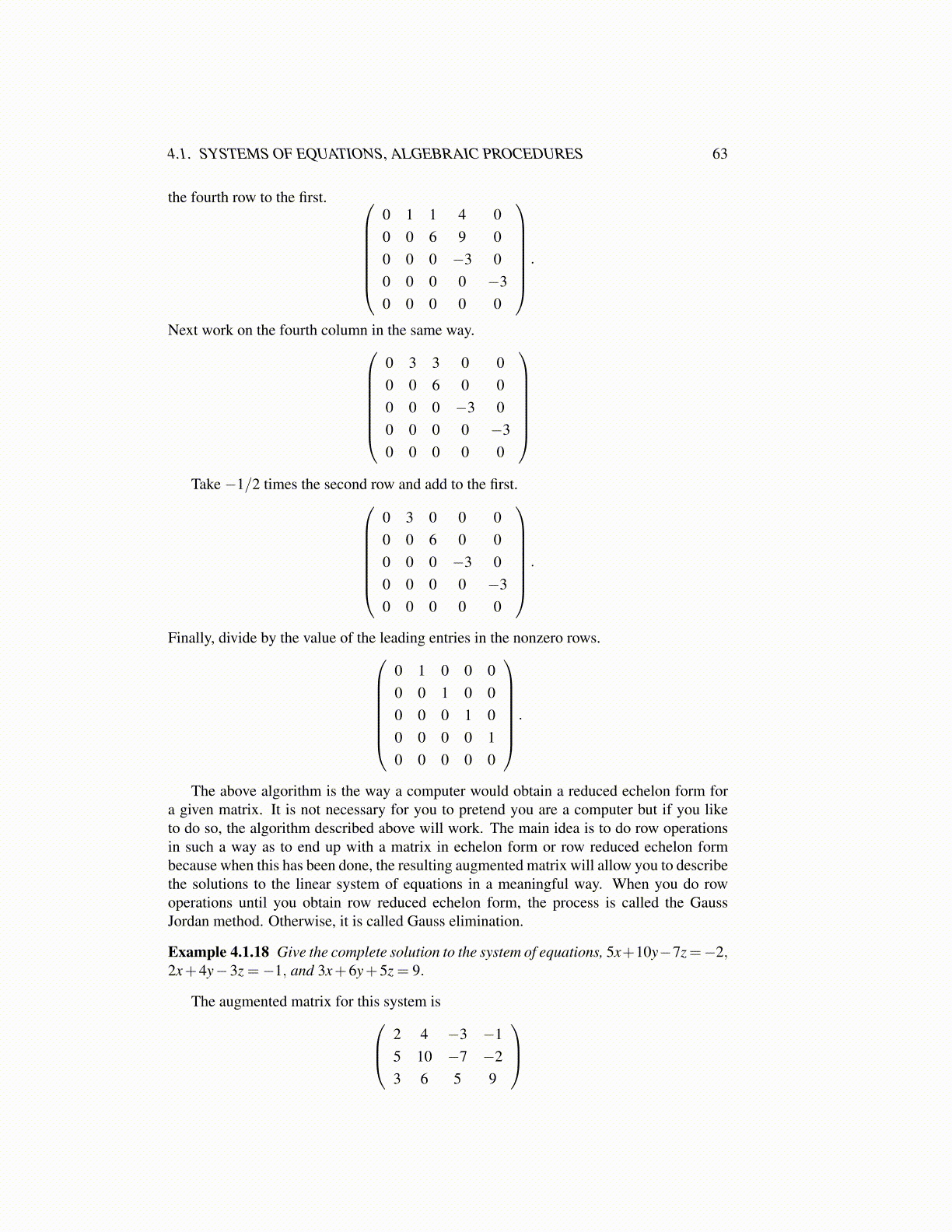
4.1. SYSTEMS OF EQUATIONS, ALGEBRAIC PROCEDURES 63
the fourth row to the first. 0 1 1 4 00 0 6 9 00 0 0 −3 00 0 0 0 −30 0 0 0 0
.
Next work on the fourth column in the same way.0 3 3 0 00 0 6 0 00 0 0 −3 00 0 0 0 −30 0 0 0 0
Take −1/2 times the second row and add to the first.
0 3 0 0 00 0 6 0 00 0 0 −3 00 0 0 0 −30 0 0 0 0
.
Finally, divide by the value of the leading entries in the nonzero rows.0 1 0 0 00 0 1 0 00 0 0 1 00 0 0 0 10 0 0 0 0
.
The above algorithm is the way a computer would obtain a reduced echelon form fora given matrix. It is not necessary for you to pretend you are a computer but if you liketo do so, the algorithm described above will work. The main idea is to do row operationsin such a way as to end up with a matrix in echelon form or row reduced echelon formbecause when this has been done, the resulting augmented matrix will allow you to describethe solutions to the linear system of equations in a meaningful way. When you do rowoperations until you obtain row reduced echelon form, the process is called the GaussJordan method. Otherwise, it is called Gauss elimination.
Example 4.1.18 Give the complete solution to the system of equations, 5x+10y−7z=−2,2x+4y−3z =−1, and 3x+6y+5z = 9.
The augmented matrix for this system is 2 4 −3 −15 10 −7 −23 6 5 9